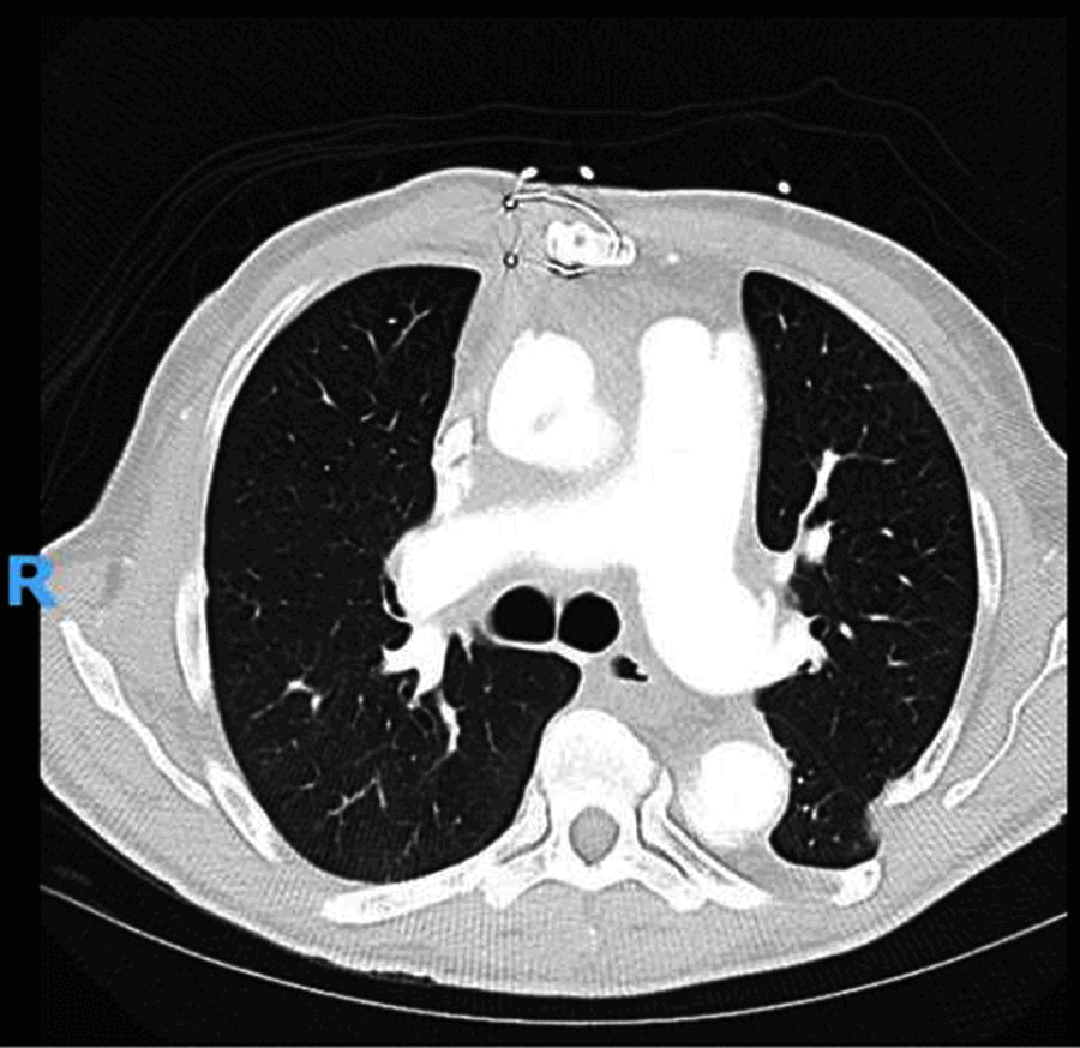Use of veno-venous extracorporeal membrane oxygenation for stabilization prior to redo sternotomy for aortic pseudoaneurysm repair
- PMID: 38404656
- PMCID: PMC10886875
- DOI: 10.21542/gcsp.2024.6
Use of veno-venous extracorporeal membrane oxygenation for stabilization prior to redo sternotomy for aortic pseudoaneurysm repair
Abstract
Background: Aortic pseudoaneurysms are particularly dangerous because of the risk of rupture and compression of mediastinal structures, including the trachea, and resultant respiratory distress. If respiratory distress progresses to respiratory failure, extracorporeal membrane oxygenation may be used to provide oxygenation prior to or during pseudoaneurysm repair. Case presentation: A 62-year-old male with a history of emergent aortic ascending and arch replacement for Stanford Type A dissection 10 months prior presented to his primary care physician with dyspnea. Chest radiography revealed a widened mediastinum, and subsequent computed tomography angiogram revealed a pseudoaneurysm at the distal suture line of the aortic arch replacement. Due to the location of the pseudoaneurysm, the patient's trachea was compressed, and he was emergently placed on veno-venous (VV) extracorporeal membrane oxygenation (ECMO) following unsuccessful intubation for respiratory distress. Two days later, the patient underwent a redo sternotomy and repair of a 2-3 mm defect in the anterior aspect of the distal suture line of the prior aortic arch replacement. The patient progressed well and was discharged on postoperative day 13. What we learned: Using a combination of peripheral bypass, hypothermic circulatory arrest, delayed closure, and respiratory support, this case demonstrates how even complex patients can be successfully treated with multiple strategies.
Copyright ©2024 The Author(s).
Figures




Similar articles
-
An urgent open surgical approach for left ventricle venting during peripheral veno-arterial extracorporeal membrane oxygenation for refractory cardiac arrest: case report.Perfusion. 2020 Jan;35(1):82-85. doi: 10.1177/0267659119853949. Epub 2019 Jun 20. Perfusion. 2020. PMID: 31218916
-
Local Anesthetic Infiltration, Awake Veno-Venous Extracorporeal Membrane Oxygenation, and Airway Management for Resection of a Giant Mediastinal Cyst: A Narrative Review and Case Report.J Clin Med. 2024 Dec 30;14(1):165. doi: 10.3390/jcm14010165. J Clin Med. 2024. PMID: 39797248 Free PMC article. Review.
-
Redo surgery in ascending aorta and aortic arch.J Cardiovasc Surg (Torino). 2014 Dec;55(6):803-12. Epub 2014 Sep 15. J Cardiovasc Surg (Torino). 2014. PMID: 25222152
-
Massive aspiration syndrome: a possible indication for "emergent" veno-venous extracorporeal membrane oxygenation?: a case report.J Med Case Rep. 2021 Oct 8;15(1):499. doi: 10.1186/s13256-021-03050-7. J Med Case Rep. 2021. PMID: 34625110 Free PMC article.
-
Emergency application of extracorporeal membrane oxygenation in a pediatric case of sudden airway collapse due to anterior mediastinal mass: A case report and review of literature.Ulus Travma Acil Cerrahi Derg. 2022 Dec;28(12):1747-1753. doi: 10.14744/tjtes.2021.49383. Ulus Travma Acil Cerrahi Derg. 2022. PMID: 36453783 Free PMC article. Review.
References
-
- Razzouk A, Gundry S, Wang N, Heyner R, Sciolaro C, Van Arsdell G, Bansal R, Vyhmeister E, Bailey L. Pseudoaneurysms of the aorta after cardiac surgery or chest trauma. Am Surg. 1993;59(12):818–823. - PubMed
-
- Kresowik TF, Khoury MD, Miller BV, Winniford MD, Shamma AR, Sharp WJ, Blecha MB, Corson JD. A prospective study of the incidence and natural history of femoral vascular complications after percutaneous transluminal coronary angioplasty. J Vasc Surg. 1991;13(2):328–335. - PubMed
Publication types
LinkOut - more resources
Full Text Sources
